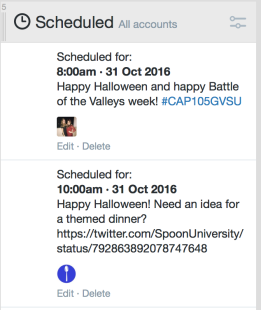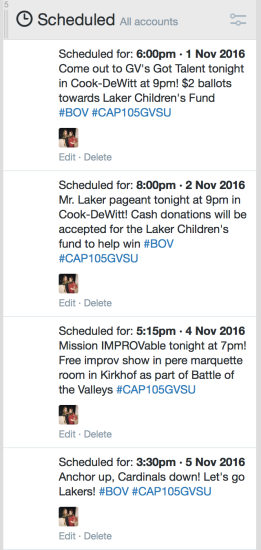“Today, PR is more about people and relationships, and PR professionals must focus on two-way communication and mutual understanding because monologue has changed to dialogue, and bloggers are gaining recognition as industry authorities, earning the same respect and reach as traditional media. The industry will continue its quest to understand the online environment and how best to integrate online tools with traditional PR” (Komodromos 2014).
Public relations (PR) is known for being a two way communication process. PR is more than forcing information and statements onto people, but understanding audiences and how to connect and reach out to them. A way this can be done is through social media. Social media can be used to relay messages and build relationships (Komodromos 2014). Social media gives companies a chance to build a personality and this can attract users that connect with the personality and want to follow the company. Despite what the company is offering, followers can be drawn in by personality first then look into what is being offered. Social media is a way to gain followers for its personality which then spreads awareness. Being present on social media can alert the public of updates from the company such as events or promotions or even just content to entertain its followers.
“The goal of PR today should be to understand the communities of people organizations want to reach, analyze their profiles and engage with them in conversations to gain trust and commitments. PR practitioners feel positive about the potential of social media tools, and as suggested, these applications enable them to communicate directly with their audiences, deliver their core messages and share their own content in their communities effectively” (Komodromos 2014).
Content can be anything from videos, blogs, photos to relate to the company. These types of content are put on social media of the brand profile in hopes to be shared and further gain awareness for the brand. “The brand profile is an owned medium that creates an avenue for consumers to interact with the brand and the brand content, with the aim to garner earned media such as likes, shares, and reactions (Antheunis, Van Kaam, Liebrecht & Van Noort 2016). Social media as a strategy works because it’s easily measureable. When content is posted, the company can track the views and impressions to see what’s working and what’s not. Sometimes with PR it’s hard to measure tactics, but social media is something that’s easily measured by looking at analytics.
In the study Public relations, ethics, and social media: A cross-national study of PR practitioners, 46.15% of respondents agreed with the statement that “social media have improved PR practitioners’ control over the distribution of messages on behalf of the organizations they serve” (Toledano 2016). 58.83% agreed that “Social media provides PR with an opportunity to elevate its status within the organization and inspire management’s socially responsible and ethical decisions (Tolendano 2016).
This study also brought up ethical issues with the use of social media. Two of the biggest ethical debates were “Is it ok for PR practitioners to write comments on social media without a disclaimer about the sponsor that paid them to do it” and “It is ok for PR practitioners to write comments on social media without identifying their real identity” (Toledano 2016). Endorsement and transparency are two big concepts in PR. Endorsements are a form of promotional but sometimes there is the ethical issue of endorsers not truly using the products themselves, but just being paid to post the product all over their social media. Endorsers should want to be transparent with their followers and truly suggest products they actually use. Transparency is also important when it comes to the second ethical debate is posting as a fake or anonymous identity on social media. Some users may hide on social media and talk negatively about a company but that is just a factor that may occur and hopefully the official company accounts social media posts will make up for the minor negative comments from negative internet users.
References
Antheunis, M., Van Kaam, J., Liebrecht, C., Van Noort, C. (2016). Content marketing on social network sites. A study on brand-related social media behavior and its motives. Tijdschrift voor Communicatiewetenschap. Amsterdam, Netherlands. 44(4). p 366-367.
Komodromos, M. (2014). A study of PR practitioners’ use of social media in Cyprus. Journal of Developmental Entrepreneurship. 9(2).
Toledano, M. (2015). Public relations, ethics, and social media: A cross-national study of PR practitioners. Public relations review. 42(1).

